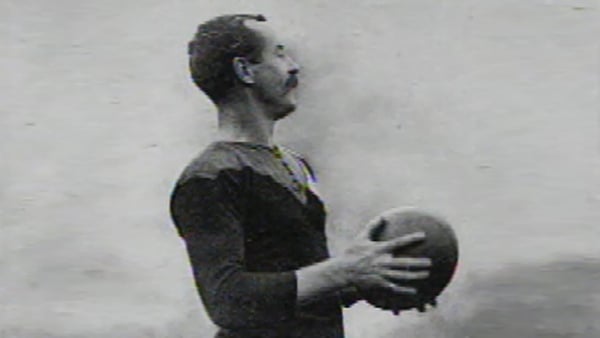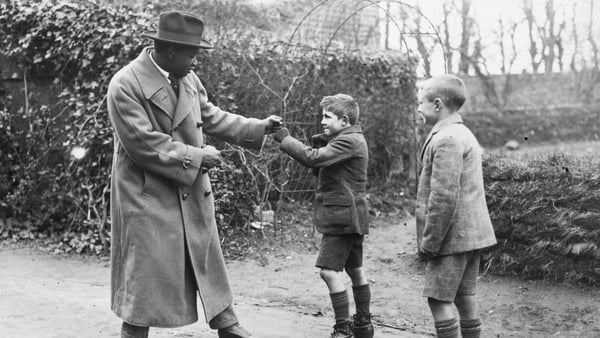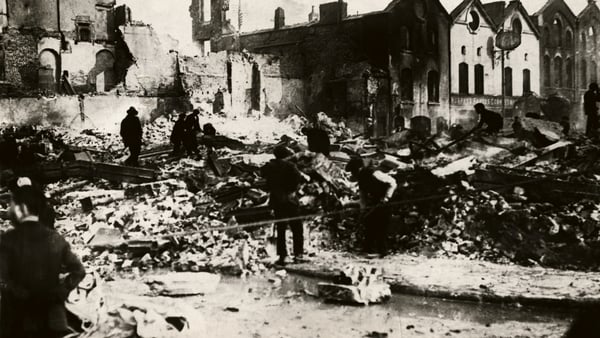Analysis: The Black Watch regiment band's presence at the funeral owed much to an earlier performance in November 1963 at the White House
There were only two foreign military units present at John F Kennedy's state funeral 60 years ago. One contained the men from the 37th Cadet Class of the Irish Defence Forces and the other was a band from a Scottish regiment. Both had been requested to attend by Kennedy’s widow Jacqueline Kennedy. The story of the Irish cadets has been told in print and on film before, but the story of the Scottish soldiers is not as well known.
The reason for the band’s inclusion in the order of ceremonies is because they performed for the president and his family just days before his assassination in Dallas. The band of the Scottish Black Watch (Royal Highland Regiment) were on a three-month tour of the United States. They were invited to play on the South Lawn of the White House on November 13th 1963 before a crowd of children from local schools.
We need your consent to load this YouTube contentWe use YouTube to manage extra content that can set cookies on your device and collect data about your activity. Please review their details and accept them to load the content.Manage Preferences
From President John Fitzgerald Kennedy Library, Black Watch Band perform at the White House on November 13th 1963
The president and his family watched from the Truman Balcony of the Executive Residence. It was one of the very last times that Kennedy appeared in public with his family. Sitting on the balcony, he was surrounded by Jacqueline, his two children, two-year-old John Jr. and five-year-old Caroline, and other members of the wider Kennedy clan. Mrs Kennedy is said to have remarked that that was the last occasion that he had spent some happy time with his children.
Before the band played on the lawn that day, the president welcomed them in person. Kennedy seemed to be in good spirits as he made a speech before the crowd. During his welcome address, he noted how the regiment had fought against America just once, during the American Revolutionary War, but that they had fought with America on many occasions, including during the two World Wars and in Korea. He also spoke of the hundreds of thousands of Scottish immigrants who had made America their home.
In return, the regiment’s leader presented him with an officer’s dirk as a memento of their visit to the White House. A dirk is a personal sidearm issued to the regiment’s officers. Once used as a thrusting dagger for use in close combat, it was now taking on more of a ceremonial role. It was engraved on the blade with the regiment’s motto, "no one wounds me with impunity", something which seemed to please America’s commander-in-chief as he commented on it to the crowd.
Some of them sported cuts and bruises, the result of a bar fight in Kentucky when they defended the president's honour on the evening of his assassination
His little son was also pleased with the gift. In a film recording of the event, John Jr. can be seen showing great interest in the shiny new present that his father had just received. Afterwards, the bandsmen were invited to drink a glass of Scotch at a reception in the White House. The president was unable to join them due to a packed agenda, but he did manage to thank them in person before they left. He boarded the buses they were travelling on and apologised for not being able to thank them in person for their performance. He told them that "duties of state" took him away from the reception before going down the buses and shaking their hands.
Just twelve days later, some of the band returned to Washington D.C. to take part in his funeral. Nine pipers were chosen to march in the funeral procession on November 25th 1963. Rigged out in full dress uniform complete with tartan kilts, horse hair leather sporrans, and tall feather bonnets made from ostrich, they must have looked a bit of a sight to the hundreds of thousands of mourners and spectators who witnessed them marching from the White House to the Cathedral of St. Matthew the Apostle, almost a mile away.
It was a bitterly cold day in Washington and the men of the Black Watch had to stand outside the White House for two hours waiting for the cortege to arrive from the Capitol Building where JFK had been lying in state in the Capitol Rotunda. Some of them sported cuts and bruises, the result of a bar fight in Kentucky when they defended the president’s honour on the evening of his assassination.
We need your consent to load this rte-player contentWe use rte-player to manage extra content that can set cookies on your device and collect data about your activity. Please review their details and accept them to load the content.Manage Preferences
From RTÉ News, archive footage of JFK's funeral in 1963
During the procession, unfamiliar tunes on bagpipes could be heard wafting through the air of Washington as a country mourned its leader. The pipers played tunes that they had performed at the White House in front of the slain president and his family only days previously. These included The Brown Haired Maiden, The Badge of Scotland, The 51st Highland Division and The Barren Rocks of Aden.
What was so unusual about this was that these are not the kind of tunes normally played at funerals. Added to this, the band was the only foreign element in the musical landscape of the funeral which captured the imagination of millions around the world.
Most of the music that was heard on that momentous day in Washington was classical music, solemn religious hymns and military music. The bagpipes of the Scottish band provided a nod to Kennedy’s Celtic ancestry and were an apt way of sending him to his final resting place. Afterwards, Mrs. Kennedy wrote to the commander of the Black Watch to thank him for participating in the funeral saying that the band’s presence was "a great tribute to the president and contributed a great deal to the ceremony".
The views expressed here are those of the author and do not represent or reflect the views of RTÉ





